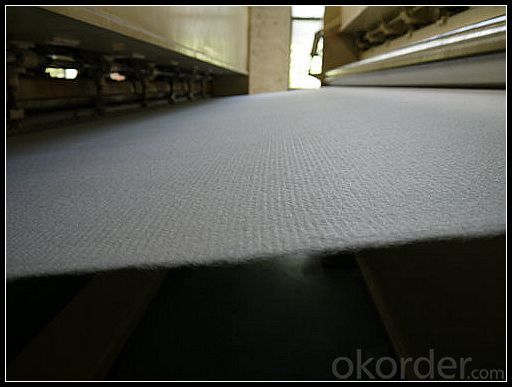- Understanding the Role of Geomembrane Liners in Waste Management
- Innovations in Geomembrane Liners for Water Management
- Geomembrane Liners: A Comprehensive Guide
- The Future of Geomembrane Liners in Civil Engineering
- Geomembrane Liners: Enhancing Landfill Stability
Manager:
WhatsApp:+86 177 0135 2670
Tel:+86 177 0135 2670
Email:marketing@okorder.com
Address:3rd Floor, No.2 Building, No.1 Sanlihe Road
HDPE Geomembranes: The Environmentally Friendly Choice for Lining
hdpe Geomembranes are a type of synthetic liner material that have gained significant popularity in recent years due to their numerous environmental and practical benefits. These versatile membranes are made from high-density polyethylene, a durable and reliable plastic that is highly resistant to chemicals, UV radiation, and temperature fluctuations. In this article, we will explore the various advantages of using HDPE geomembranes for lining applications, as well as their impact on the environment and the reasons why they are considered an eco-friendly choice.

The Versatility of HDPE Geomembranes
One of the key features of HDPE geomembranes is their versatility. They can be used in a wide range of applications, from landfill liners and water treatment facilities to reservoirs and canal linings. This adaptability makes them an ideal choice for various industries and projects, as they can be tailored to meet specific needs and requirements.
Durability and Longevity
HDPE geomembranes are known for their exceptional durability and longevity. They can last for several decades without losing their structural integrity, making them a cost-effective solution for long-term projects. This longevity not only saves money but also reduces the need for frequent replacements, which in turn minimizes waste and environmental impact.
Chemical Resistance
The chemical resistance of HDPE geomembranes is another significant advantage. They are impermeable to a wide range of chemicals, making them suitable for use in environments where chemical exposure is a concern. This resistance ensures that the geomembranes can protect the surrounding environment from potential chemical contamination.
UV Resistance and Temperature Tolerance
HDPE geomembranes are also highly resistant to UV radiation and temperature fluctuations. This means that they can be used in various climates and conditions without degrading or losing their effectiveness. The UV resistance is particularly important in outdoor applications, where exposure to sunlight is inevitable.
Environmental Impact and Sustainability
When it comes to environmental impact, HDPE geomembranes have a lot to offer. They are made from a single material, which makes them fully recyclable at the end of their service life. This recyclability reduces the amount of waste that ends up in landfills and contributes to a circular economy. Moreover, HDPE production has a lower carbon footprint compared to other materials, making it a more sustainable choice.
Ease of Installation and Maintenance
The installation process for HDPE geomembranes is relatively simple and straightforward. They can be easily cut and shaped to fit the specific contours of a project, and they require minimal maintenance once installed. This ease of installation and low maintenance requirements contribute to the overall cost-effectiveness of using HDPE geomembranes.
Case Studies and Real-world Applications
To further illustrate the benefits of HDPE geomembranes, let's look at some real-world applications and case studies. For instance, in the construction of a new water treatment plant, HDPE geomembranes were used to line the facility, ensuring that the water remained clean and free from contaminants. In another example, a mining company used HDPE geomembranes to line a tailings storage facility, preventing the leakage of harmful chemicals into the surrounding environment.
The Future of HDPE Geomembranes
As the world becomes increasingly aware of the importance of environmental sustainability, the use of HDPE geomembranes is expected to grow. Their versatility, durability, and eco-friendly nature make them an attractive option for a wide range of applications. As technology advances, we can expect further improvements in the production and performance of HDPE geomembranes, ensuring that they continue to be a leading choice for lining solutions.
Conclusion
In conclusion, HDPE geomembranes are a fantastic environmentally friendly choice for lining projects. Their versatility, durability, chemical resistance, UV resistance, temperature tolerance, and recyclability make them an excellent option for a variety of applications. By choosing HDPE geomembranes, we can contribute to a more sustainable future while also ensuring the longevity and effectiveness of our projects.
- Previous:HDPE Geomembranes: The Key to Efficient Wastewater Pond Lining
- Next:HDPE Geomembranes: The Versatile Solution for Various Industries






